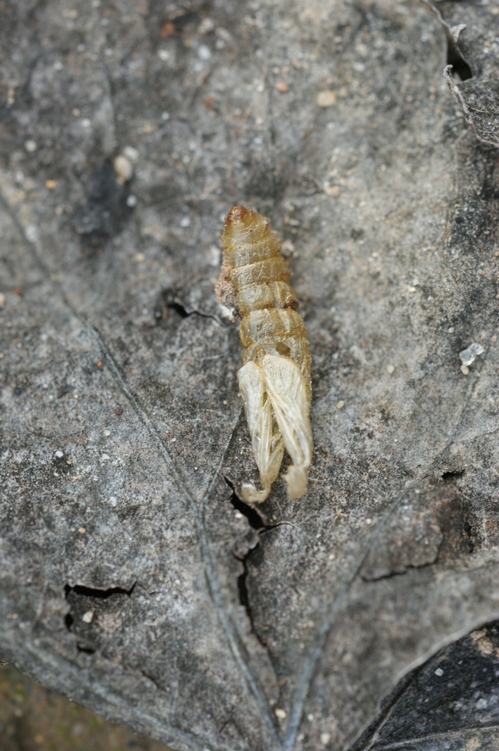Stephen Vasquez, Walt Bentley and Matthew Fidelibus
Over the last four years some growers have noticed an unusual worm in their vineyards. The worms are difficult to see if you are passively walking the vineyard but if you peel the old loose bark away from the head, trunk or cordons until you reach the newest bark, you may find holes with large white larvae (Fig. 1). The insect is a moth and has been identified as a member of the Givira genera, which have been mostly associated with old (>35 years) Thompson Seedless vineyards but have been found in vineyards planted to other cultivars too. Many of the older raisin vineyards located in Fowler/Del Rey and to the east in Sanger/Parlier area have documented this wood boring worm. Whether or not they cause direct economic damage is uncertain; most of the worms we saw seemed to be boring into dead wood. However, some growers have said they have seen these worms feeding on living cambial tissue and on young emerging buds and green shoots. Their burrows also offer refuge to vine mealybug, which is undesirable to growers trying to mange this pest.
Often what first attracts a grower’s eye is the adult cast left behind after emergence. The casts stick half way out of a bored hole in old wood (Fig. 2); resembling planes that crash dove into the wood. Figure 3 shows the cast pulled from the hole.
Currently, little is know about the moth’s biology but there are plans to do some trapping in March. Using black light traps, UC researchers hope to catch adult moths that can then be used to identify the species and give researchers a better idea of what potential management methods could be used to reduce populations. Additionally, surveys will take place to try to identify egg masses associated with this genus.
Stephen Vasquez is the UC Cooperative Extension Viticulture Farm Advisor in Fresno County. Matthew Fidelibus and Walt Bentley are Viticulture Extension Specialist and UC IPM Entomology Advisor, respectively, located at the UC Kearney Agriculture Center.
Attached Images:


